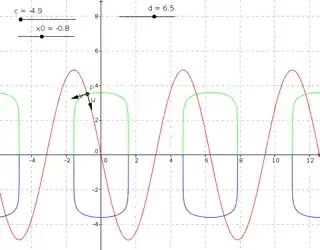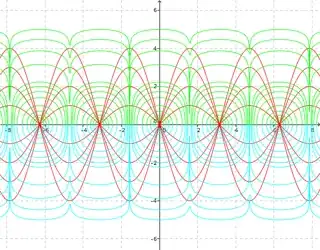I want to find a parametric curve that would be perpendicular to all curves $y=c \sin x$
I can see that these curves will be straight lines when $x=\frac{2n+1}2\pi$ and they should become tiny circles as $x\rightarrow n\pi$, but I do not see how I would do this mathematically or what the answer would look like.
The only thing that came to my mind so far is to think of a function $F$ and equate its derivative to be $-\frac{1}{c \cos x}$
$$-\frac{\frac{\partial F}{\partial x}}{\frac{\partial F}{\partial y}}=-\frac{1}{c \cos x}$$
$$c\cos x\frac{\partial F}{\partial x}=\frac{\partial F}{\partial y}$$
A separable solution to this would be
$$\exp \bigg(\frac{2 k \tanh ^{-1}\left(\tan \left(\frac{x}{2}\right)\right)}{c}+ky\bigg)$$
I want the parametric curves to be perpendicular for all $c$. But I do not know if this makes sense and how I would continue.
Intuitively, I am expecting to see concentric ellipses centered at $x=n\pi$

